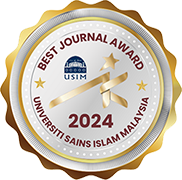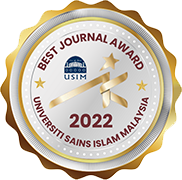LEGAL REQUIREMENTS OF HOME-BASED CHILDCARE CENTRES IN MALAYSIA; ARE CHILDCARE PROVIDERS AWARE?
DOI:
https://doi.org/10.33102/mjsl.vol12no2.517Keywords:
Children, childcare centre, home-based childcare, regulation, MalaysiaAbstract
Home-based childcare (HBCC) services are among the childcare services available in Malaysia, as ensconsced in the Child Care Centre Act 1984. In Malaysia, HBCC providers are only allowed to care for a minimum of four and a maximum of 10 children. However, this definition does not include small home-based childcare services or childminders who care for less than four children. Employing the qualitative method of content analysis, this study discusses the laws and regulations governing HBCC in Malaysia, particularly the legal requirements that need to be fulfilled. This is further supported by interviews conducted with childcare providers who look after children at their home to examine their level of understanding of the legal requirements under Malaysian childcare laws and regulations. Findings indicate, among others, that the HBCC operators are unaware of the need to register with the Social Welfare Department. The adherence to the legal requirements for this HBCC should not be taken lightly, as it is crucial to ensure the safety and well-being of children. Consequently, greater efforts are required to ensure the children's health and safety because the current procedures rely solely on the experience and expertise of the childcare providers. This paper contributes to the extent of knowledge of HBCC in Malaysia especially towards policy makers, child care operators and parents by exploring the experiences of HBCC childcare providers. It is proposed that continuous improvements need to be made to the laws and regulations on HBCC in ensuring high quality services of HBCC.
Downloads
References
Abdul Mutalib, M. (2020). Enhancing child care centres in Malaysia through legal analysis [Doctoral dissertation, Universiti Sains Islam Malaysia]. Universiti Sains Islam Malaysia Research Repository. https://oarep.usim.edu.my/handle/123456789/13000
Aziz, N. A. A., Zakaria, N. H., Hashim, E., Rasli, R. M., Saari, E. M., Mustafa, M. C., & Yassin, S. M. (2021). Issues in operating childcare centers in Malaysia. International Journal of Evaluation and Research in Education, 10(3), 993–1000. https://doi.org/10.11591/ijere.v10i3.20881
Barros, S., Cadima, J., Bryant, D. M. B., Coelho, V., Pinto, A. I., Pessanha, M., & Peixoto, C. (2016). Infant child care quality in Portugal: Associations with structural characteristics. Early Childhood Research Quarterly, 37, 118–130. https://doi.org/10.1016/j.ecresq.2016.05.003
Bowne, J. B., Magnuson, K. A., Schindler, H. S., Duncan, G. J., & Yoshikawa, H. (2017). A meta-analysis of class sizes and ratios in early childhood education programs: Are thresholds of quality associated with greater impacts on cognitive, achievement, and socioemotional outcomes? Educational Evaluation and Policy Analysis, 39(3), 407–428. https://doi.org/10.3102/0162373716689489
Burchinal, M. (2017). Measuring early care and education quality. Child Development Perspectives, 12(1), 3–9. https://doi.org/10.1111/cdep.12260
Department of Social Welfare. (2023, August 10). “2022 annual statistics report”. An Roinn Coimirce Sosialai. https://www.gov.ie/en/publication/2e491-2022-annual-statistics-report/
Fiene, R. (2002, March 31). “13 indicators of quality child care: Research update”. ASPE: Office of the Assistant Secretary for Planning and Evaluation. https://aspe.hhs.gov/reports/13-indicators-quality-child-care-research-update
Gromada, A., Richardson, D., & Rees, G. (2020). Childcare in a global crisis: The impact of COVID-19 on work and family life (Innocenti Research Briefs No. 2020-18).
Hashim, N. I. I., Yusof, W., & Mohd Kusrin, Z. (2019). Konsep pengabaian dan kecuaian kanak-kanak oleh ibu bapa atau penjaga di Malaysia. Malaysian Journal of Syariah and Law, 7(1), 57–70.
Hu, B. Y., Fan, X., Wu, Y., & Yang, N. (2017). Are structural quality indicators associated with preschool process quality in China? An exploration of threshold effects. Early Childhood Research Quarterly, 40(February), 163–173. https://doi.org/10.1016/j.ecresq.2017.03.006
Kurbanova, S. (2022). Toys- toys: The role and importance of toys in preschool education. International Scientific Research Journal, 3(1), 559–563.
Melhuish, E., Ereky-Stevens, K., Petrogiannis, K., Ariescu, A., Penderi, E., Rentzou, K., Tawell, A., Slot, P., Broekhuizen, M., & Leserman, P. (2015). A review of research on the effects of early childhood education and care (ECEC) on child development. In Curriculum Quality Analysis and Impact Review of European Early Childhood Education and Care (CARE - European Early Childhood Education and Care Publications). CARE - European Early Childhood Education and Care.
Mustafa, Z., Kamari, M. N., A Rahman, P. Z., Talib, J., Kharuddin, A. F., Ku Ibrahim, K. F., Muhammad Taha, N., & Md Yasin, S. F. (2017). “Laporan akhir kajian perkhidmatan taman asuhan kanak-kanak (TASKA) di Malaysia”. Unitary International University. https://www.collegesidekick.com/study-docs/2312942
National Association for Regulatory Administration, National Center on Child Care Quality Improvement, & A Service of the Office of Child Care. (2017, January). “Best practices for human care regulation (Issue January)”. National Association for Regulatory Administration. https://www.naralicensing.org/best-practices
O’Regan, M. (2023). A profession in transition: Childminding in Ireland. Norland Educare Research Journal, 1(1), 1–17. https://doi.org/10.60512/repository.norland.ac.uk.00000006
Papatheodorou, T., & Luff, P. (2023). Characteristics and qualities of home-based childcare: Exploring the views of trained childminders and nannies. Norland Educare Research Journal, 1(1), 1–23. https://doi.org/10.60512/repository.norland.ac.uk.00000008
Perlman, M., Fletcher, B., Falenchuk, O., Brunsek, A., McMullen, E., & Shah, P. S. (2017). Child-staff ratios in early childhood education and care settings and child outcomes: A systematic review and meta-analysis. PLoS ONE, 12(1), 1–24. https://doi.org/10.1371/journal.pone.0170256
Phillipsen, L. C., Burchinal, M. R., Howes, C., & Cryer, D. (1997). The prediction of process quality from structural features of child care. Early Childhood Research Quarterly, 12(3), 281–303. https://doi.org/10.1016/S0885-2006(97)90004-1
Poston, B. (2009). An exercise in personal exploration: Maslow’s hierarchy of needs. The Surgical Technologist, 41(8), 347–353.
Rahmatullah, B., Muhamad Rawai, N., Mohamad Samuri, S., & Md Yassin, S. (2021). Overview of early childhood care and education in Malaysia. Hungarian Educational Research Journal, 11(4), 396–412. https://doi.org/10.1556/063.2021.00074
Rhee, O. (2007). Childcare policy in Korea: Current status and major issues. International Journal of Child Care and Education Policy, 1(1), 59–72.
Risica, P. M., Karpowicz, J. M., Ash, T. von, Gans, K. M., Stowers, K. C., & Tovar, A. (2022). Feeding and activity environments for infants and toddlers in childcare centers and family childcare homes in Southeastern New England. International Journal of Environmental Research and Public Health, 19(15), 1–17. https://doi.org/10.3390/ijerph19159702
Sarnon, N., Ali, M., & Zakaria, E. (2017). Amalan persekitaran selamat kanak-kanak dalam kalangan pengasuh di rumah yang tidak berdaftar. Journal of Social Sciences and Humanities, 017, 1–15.
Sulaiman, Y. (2022). A new model of childcare centres in Malaysia. UUM Press.
United Kingdom Department for Education. (2013, July). “International evidence on childcare policies and practices research report”. Department for Education. https://www.gov.uk/government/uploads/system/uploads/attachment_data/file/212614/DFE-RR285.pdf
Vandell, D. L., & Wolfe, B. (2000). “Child care quality: Does it matter and does it need to be improved? (Special Report no. 78)”. Institute for Research on Poverty Special Report. http://www.ncbi.nlm.nih.gov/sites/entrez?Db=pubmed&DbFrom=pubmed&Cmd=Link&LinkName=pubmed_pubmed&LinkReadableName=Related%20Articles&IdsFromResult=11081694&ordinalpos=3&itool=EntrezSystem2.PEntrez.Pubmed.Pubmed_ResultsPanel.Pubmed_RVDocSum
Vandenbroeck, M., Slot, P., & Hulpia, H. (2021). Quality in home-based childcare providers: Variations in process quality. European Early Childhood Education Research Journal, 29(2), 261–277. https://doi.org/10.1080/1350293X.2021.1895272
Downloads
Published
Issue
Section
Categories
License
Copyright (c) 2024 Mashitah Abdul Mutalib, Rahimah Saimin, Intan Nadia Ghulam Khan, Abidah Abdul Ghafar, Assoc Prof Dr.

This work is licensed under a Creative Commons Attribution-NonCommercial 4.0 International License.















































